An Air Terminal Device with a Changing Geometry to Improve Indoor Air Quality for VAV Ventilation Systems
Abstract
1. Introduction
2. Materials and Methods
2.1. Experimental Study
2.2. Numerical Simulation
- 330 m3/h as the maximum airflow,
- 220 m3/h as the medium airflow,
- 150 m3/h as the minimum airflow.
- ATD setting 1—all three rings are opened; ATD diameter DATDef = 200 mm, ATD area AATD = 30,961 mm2;
- ATD setting 2—the largest ring is closed and two smaller are opened; ATD diameter DATDef = 160 mm, ATD area AATD = 19,745 mm2;
- ATD setting 3—only the smallest ring is opened; ATD diameter DATD = 100 mm, ATD area AATD = 7631 mm2.
3. Results
Thermal Comfort
- Humidity value: 50%,
- Temperature value: 300 K,
- Velocity values for PMV and PPD calculation were taken from the solution field,
- Radiation temperature: 300 K,
- The following clothes were selected with the ensemble clothing resistance value of 0.43: underwear, 0.03; shirts/blouses, lightweight, long sleeves 0.2; trousers, normal 0.2;
- The metabolic rate value of 1.2 was chosen for sedentary activity.
4. Conclusions
Author Contributions
Funding
Conflicts of Interest
References
- Carreira, P.; Costa, A.A.; Mansur, V.; Arsénio, A. Can HVAC really learn from users? A simulation-based study on the effectiveness of voting for comfort and energy use optimization. Sustain. Cities Soc. 2018, 41, 275–285. [Google Scholar] [CrossRef]
- Wyon, D.P. The effects of indoor air quality on performance and productivity. Indoor Air 2004, 14 (Suppl. S7), 92–101. [Google Scholar] [CrossRef]
- Aparicio-Ruiz, P.; Barbadilla-Martín, E.; Salmerón-Lissén, J.M.; Guadix-Martín, J. Building automation system with adaptive comfort in mixed mode buildings. Sustain. Cities Soc. 2018, 43, 77–85. [Google Scholar] [CrossRef]
- Ramos, N.M.M.; Almeida, R.M.S.F.; Simões, M.L.; Pereira, P.F. Knowledge discovery of indoor environment patterns in mild climate countries based on data mining applied to in-situ measurements. Sustain. Cities Soc. 2017, 30, 37–48. [Google Scholar] [CrossRef]
- Okochi, G.S.; Yao, Y. A review of recent developments and technological advancements of variable-air-volume (VAV) air-conditioning systems. Renew. Sustain. Energy Rev. 2016, 59, 784–817. [Google Scholar] [CrossRef]
- Zhao, T.; Hua, P.; Dai, W.; Zhang, J.; Ma, L. An optimal control method for discrete variable outdoor air volume setpoint determination in variable air volume systems. Build. Environ. 2020, 167, 106444. [Google Scholar] [CrossRef]
- Ben-David, T.; Rackes, A.; Lo, L.J.; Wen, J.; Waring, M.S. Optimizing ventilation: Theoretical study on increasing rates in offices to maximize occupant productivity with constrained additional energy use. Build. Environ. 2019, 166, 106314. [Google Scholar] [CrossRef]
- Anand, P.; Sekhar, C.; Cheong, D.; Santamouris, M.; Kondepudi, S. Occupancy-based zone-level VAV system control implications of thermal comfort, ventilation, indoor air quality and building energy efficiency. Energy Build. 2019, 204, 109473. [Google Scholar] [CrossRef]
- Brooks, J.; Goyal, S.; Subramany, R.; Lin, Y.; Liao, C.; Middelkoop, T.; Ingley, H.; Arpan, L.; Barooah, P. Experimental evaluation of occupancy-based energy-efficient climate control of VAV terminal units. Sci. Technol. Built Environ. 2015, 21, 469–480. [Google Scholar] [CrossRef]
- Kim, D.; Cox, S.J.; Cho, H.; Im, P. Evaluation of energy savings potential of variable refrigerant flow (VRF) from variable air volume (VAV) in the U.S. climate locations. Energy Rep. 2017, 3, 85–93. [Google Scholar] [CrossRef]
- Kim, H.; Cho, Y. A study on the Determination of Minimum Airflow setpoint of Single Duct VAV Terminal Units. In Proceedings of the IBPSA Asia Conference—ASimo2014, Nagoya, Japan, 2014; pp. 894–899. [Google Scholar]
- Kim, H.; Cho, Y.H. Development of a terminal control system with variable minimum airflow rate. Energies 2012, 5, 4643–4664. [Google Scholar] [CrossRef]
- Kang, S.-H.H.; Kim, H.-J.J.; Cho, Y.-H.H. A study on the control method of single duct VAV terminal unit through the determination of proper minimum air flow. Energy Build. 2014, 69, 464–472. [Google Scholar] [CrossRef]
- Kaam, S.; Raftery, P.; Cheng, H.; Paliaga, G. Time-averaged ventilation for optimized control of variable-air-volume systems. Energy Build. 2017, 139, 465–475. [Google Scholar] [CrossRef]
- Cho, Y.-H.; Liu, M. Minimum airflow reset of single duct VAV terminal boxes. Build. Environ. 2009, 44, 1876–1885. [Google Scholar] [CrossRef]
- Energy Design Resources, Advanced Variable Air Volume Vav System Design Guide. Available online: https://energydesignresources.com/ (accessed on 14 October 2018).
- EN 15251. Indoor Environmental Input Parameters for Design and Assessment of Energy Performance of Buildings Addressing Indoor Air Quality, Thermal Environment, Lighting and Acoustics; European Committee for Standardization: Brussels, Belgium, 2012. [Google Scholar]
- EN ISO 7730. Ergonomics of the Thermal Environment—Analytical Determination and Interpretation of Thermal Comfort Using Calculation of the PMV and PPD Indices and Local Thermal Comfort Criteria. 2005. Available online: https://www.iso.org/standard/39155.html (accessed on 5 August 2020).
- Taylor, S.T.; Persily, A.K.; Burge, H.; Daynard, R.; Fanger, P.O.; Fickes, E.A.; Fisher, F.J.; Gallo, F.M.; Halliwell, J.L.; Hart, K.Q.; et al. Ventilation for Acceptable Indoor Air Quality. 1999. Available online: https://www.ce.utexas.edu/prof/Novoselac/classes/ARE389H/Handouts/Std62-2001.pdf (accessed on 5 August 2020).
- Shin, M.S.; Rhee, K.N.; Lee, E.T.; Jung, G.J. Performance evaluation of CO2-based ventilation control to reduce CO2 concentration and condensation risk in residential buildings. Build. Environ. 2018, 142, 451–463. [Google Scholar] [CrossRef]
- Heracleous, C.; Michael, A. Experimental assessment of the impact of natural ventilation on indoor air quality and thermal comfort conditions of educational buildings in the Eastern Mediterranean region during the heating period. J. Build. Eng. 2019, 26, 100917. [Google Scholar] [CrossRef]
- Majd, E.; McCormack, M.; Davis, M.; Curriero, F.; Berman, J.; Connolly, F.; Leaf, P.; Rule, A.; Green, T.; Clemons-Erby, D.; et al. Indoor air quality in inner-city schools and its associations with building characteristics and environmental factors. Environ. Res. 2019, 170, 83–91. [Google Scholar] [CrossRef]
- Militello-Hourigan, R.E.; Miller, S.L. The impacts of cooking and an assessment of indoor air quality in Colorado passive and tightly constructed homes. Build. Environ. 2018, 144, 573–582. [Google Scholar] [CrossRef]
- Langer, S.; Bekö, G.; Bloom, E.; Widheden, A.; Ekberg, L. Indoor air quality in passive and conventional new houses in Sweden. Build. Environ. 2015, 93, 92–100. [Google Scholar] [CrossRef]
- Alves, C.A.; Calvo, A.I.; Castro, A.; Fraile, R.; Evtyugina, M.; Bate-Epey, E.F. Indoor air quality in two university sports facilities. Aerosol Air Qual. Res. 2013, 13, 1723–1730. [Google Scholar] [CrossRef]
- Kisilewicz, T.; Dudzińska, A. Summer overheating of a passive sports hall building. Arch. Civ. Mech. Eng. 2015, 15, 1193–1201. [Google Scholar] [CrossRef]
- Wargocki, P.; Porras-Salazar, J.A.; Contreras-Espinoza, S. The relationship between classroom temperature and children’s performance in school. Build. Environ. 2019, 157, 197–204. [Google Scholar] [CrossRef]
- Stabile, L.; Buonanno, G.; Frattolillo, A.; Dell’Isola, M. The effect of the ventilation retrofit in a school on CO2, airborne particles, and energy consumptions. Build. Environ. 2019, 156, 1–11. [Google Scholar] [CrossRef]
- Deng, S.; Lau, J. Seasonal variations of indoor air quality and thermal conditions and their correlations in 220 classrooms in the Midwestern United States. Build. Environ. 2019, 157, 79–88. [Google Scholar] [CrossRef]
- Liu, J.; Yang, X.; Jiang, Q.; Qiu, J.; Liu, Y. Occupants’ thermal comfort and perceived air quality in natural ventilated classrooms during cold days. Build. Environ. 2019, 158, 73–82. [Google Scholar] [CrossRef]
- Gładyszewska-Fiedoruk, K. Analysis of stack ventilation system effectiveness in an average kindergarten in north-eastern Poland. Energy Build. 2011, 43, 2488–2493. [Google Scholar] [CrossRef]
- Che, W.W.; Tso, C.Y.; Sun, L.; Ip, D.Y.K.; Lee, H.; Chao, C.Y.H.; Lau, A.K.H. Energy consumption, indoor thermal comfort and air quality in a commercial office with retrofitted heat, ventilation and air conditioning (HVAC) system. Energy Build. 2019, 201, 202–215. [Google Scholar] [CrossRef]
- Li, X.; Zhao, T.; Zhang, J.; Chen, T. Predication control for indoor temperature time-delay using Elman neural network in variable air volume system. Energy Build. 2017, 154, 545–552. [Google Scholar] [CrossRef]
- Ye, X.; Kang, Y.; Yang, F.; Zhong, K. Comparison study of contaminant distribution and indoor air quality in large-height spaces between impinging jet and mixing ventilation systems in heating mode. Build. Environ. 2019, 160, 106159. [Google Scholar] [CrossRef]
- Kalmár, F. Innovative Method and Equipment for Personalized Ventilation. Available online: https://s3.amazonaws.com/objects.readcube.com/articles/downloaded/wiley/578f96450a625d51181a6ad8602e9ffb4050698cd7ce9c86977bf4fb1709f42e.pdf?AWSAccessKeyId=AKIAIJZYFKH6APDFT3HA&Expires=1442620800&Signature=puirPVisC69kvEN6YlblLKp9Kk0%253D&response-content (accessed on 17 September 2015).
- Rabani, M.; Madessa, H.B.; Nord, N.; Schild, P.; Mysen, M. Performance assessment of all-air heating in an office cubicle equipped with an active supply diffuser in a cold climate. Build. Environ. 2019, 156, 123–136. [Google Scholar] [CrossRef]
- Nielsen, P.V. Velocity distribution in a room ventilated by displacement ventilation and wall-mounted air terminal devices. Energy Build. 2000, 31, 179–187. [Google Scholar] [CrossRef]
- Hurnik, M. Systemy Klimatyzacji o Zmiennej Ilości Powietrza z Indukcujnymi Regulatorami Przepływu; Wydawnictwo Politechniki Śląskiej: Gliwice, Poland, 2018. [Google Scholar]
- Sun, Z.; Wang, S. A CFD-based test method for control of indoor environment and space ventilation. Build. Environ. 2010, 45, 1441–1447. [Google Scholar] [CrossRef]
- Du, Z.; Xu, P.; Jin, X.; Liu, Q. Temperature sensor placement optimization for VAV control using CFD–BES co-simulation strategy. Build. Environ. 2015, 85, 104–113. [Google Scholar] [CrossRef]
- Gangisetti, K.; Claridge, D.E.; Srebric, J.; Paulus, M.T. Influence of reduced VAV flow settings on indoor thermal comfort in an office space. Build. Simul. 2016, 9, 101–111. [Google Scholar] [CrossRef]
- Nada, S.A.; El-Batsh, H.M.; Elattar, H.F.; Ali, N.M. CFD investigation of airflow pattern, temperature distribution and thermal comfort of UFAD system for theater buildings applications. J. Build. Eng. 2016, 6, 274–300. [Google Scholar] [CrossRef]
- Mu, Y.; Liu, M.; Ma, Z.; Zhang, J. Resistance characteristic analysis based study on a novel damper torque airflow sensor for VAV terminals. Build. Environ. 2020, 175, 106813. [Google Scholar] [CrossRef]
- Hurnik, M. Novel cylindrical induction controller and its application in VAV air conditioning system in an office building. Energy Build. 2016, 130, 341–349. [Google Scholar] [CrossRef]
- Liu, R.; Wen, J.; Waring, M.S. Improving airflow measurement accuracy in VAV terminal units using flow conditioners. Build. Environ. 2014, 71, 81–94. [Google Scholar] [CrossRef]
- Pasut, W.; Bauman, F.; De Carli, M. The use of ducts to improve the control of supply air temperature rise in UFAD systems: CFD and lab study. Appl. Energy 2014, 134, 490–498. [Google Scholar] [CrossRef]
- Szczepanik-Ścisło, N.; Schnotale, J. Modelowanie CFD nawiewnika z dynamicznie zmieniającą się geometrią w celu poprawy efektywności wentylacji w systemach VAV. Ciepłownictwo Ogrzew. Went. 2017, 1, 38–42. [Google Scholar] [CrossRef]
- PN EN 12238. Ventilation for Buildings—Air Terminal Devices—Aerodynamic Testing and Rating for Mixed Flow Application; Polish Committee for Standardization: Warsaw, Poland, 2002. [Google Scholar]
- ISO 5167-2. Measurement of Fluid Flow by Means of Pressure Differential dEvices Inserted in Circular-Cross Section Conduits Running Full—Part 2: Orifice Plates; Polish Committee for Standardization: Warsaw, Poland, 2003. [Google Scholar]
- ISO 5167-1. Measurement of Fluid Flow by Means of Pressure Differential Devices Inserted in Circular Cross-Section Conduits Running Full—Part 1: General Principles and Requirements; Polish Committee for Standardization: Warsaw, Poland, 2003. [Google Scholar]
- Nielsen, P.V. Fifty years of CFD for room air distribution. Build. Environ. 2015, 91, 78–90. [Google Scholar] [CrossRef]
- Pang, L.; Li, P.; Bai, L.; Liu, D.; Zhou, Y.; Yao, J. Optimization of air distribution mode coupled interior design for civil aircraft cabin. Build. Environ. 2018, 134, 131–145. [Google Scholar] [CrossRef]
- Al Assaad, D.; Habchi, C.; Ghali, K.; Ghaddar, N. Effectiveness of intermittent personalized ventilation in protecting occupant from indoor particles. Build. Environ. 2018, 128, 22–32. [Google Scholar] [CrossRef]
- Montazeri, H.; Montazeri, F. CFD simulation of cross-ventilation in buildings using rooftop wind-catchers: Impact of outlet openings. Renew. Energy 2018, 118, 502–520. [Google Scholar] [CrossRef]
- ANSYS. ANSYS FLUENT Theory Guide; Release 17.0; ANSYS Inc.: Canonsburg, PA, USA, 2017; Available online: http://www.ansys.com (accessed on 5 August 2020).
- Burchard, H.; Petersen, O. Models of turbulence in the marine environment—A comparative study of two-equation turbulence models. J. Mar. Syst. 1999, 21, 29–53. [Google Scholar] [CrossRef]
- Dijkstra, Y.M.; Uittenbogaard, R.E.; van Kester, J.A.T.M.; Pietrzak, J.D. In search of improving the numerical accuracy of the k-e(open) model by a transformation to the k-τ model. Ocean Model. 2016, 104, 129–142. [Google Scholar] [CrossRef]
- Geng, L.; Liu, H.; Wei, X. International Journal of Thermal Sciences CFD analysis of the flashing flow characteristics of subcritical refrigerant R134a through converging-diverging nozzles. Int. J. Therm. Sci. 2019, 137, 438–445. [Google Scholar] [CrossRef]
- Shan, X.; Luo, N.; Sun, K.; Hong, T.; Lee, Y.; Lu, W.; Engineering, C.; Kong, H.; Administrative, S. Coupling CFD and building energy modelling to optimize the operation of a large open office space for occupant comfort. Sustain. Cities Soc. 2020, 60, 102257. [Google Scholar] [CrossRef]
- Najafabadi, H.H.; Moraveji, M.K. CFD investigation of local properties of Al2O3/water nanofluid in a converging microchannel under imposed pressure difference. Adv. Powder Technol. 2017, 28, 763–774. [Google Scholar] [CrossRef]
- De Dear, R.J.; Akimoto, T.; Arens, E.A.; Brager, G.; Candido, C.; Cheong, K.W.D.; Li, B.; Nishihara, N.; Sekhar, S.C.; Tanabe, S.; et al. Progress in thermal comfort research over the last twenty years. Indoor Air 2013, 23, 442–461. [Google Scholar] [CrossRef]
- D’Ambrosio Alfano, F.R.; Olesen, B.W.; Palella, B.I.; Riccio, G. Thermal comfort: Design and assessment for energy saving. Energy Build. 2014, 81, 326–336. [Google Scholar] [CrossRef]
- Enescu, D. A review of thermal comfort models and indicators for indoor environments. Renew. Sustain. Energy Rev. 2017, 79, 1353–1379. [Google Scholar] [CrossRef]
- Fanger, P.O. Thermal Comfort; Kreiger: Malabar, FL, USA, 1982. [Google Scholar]
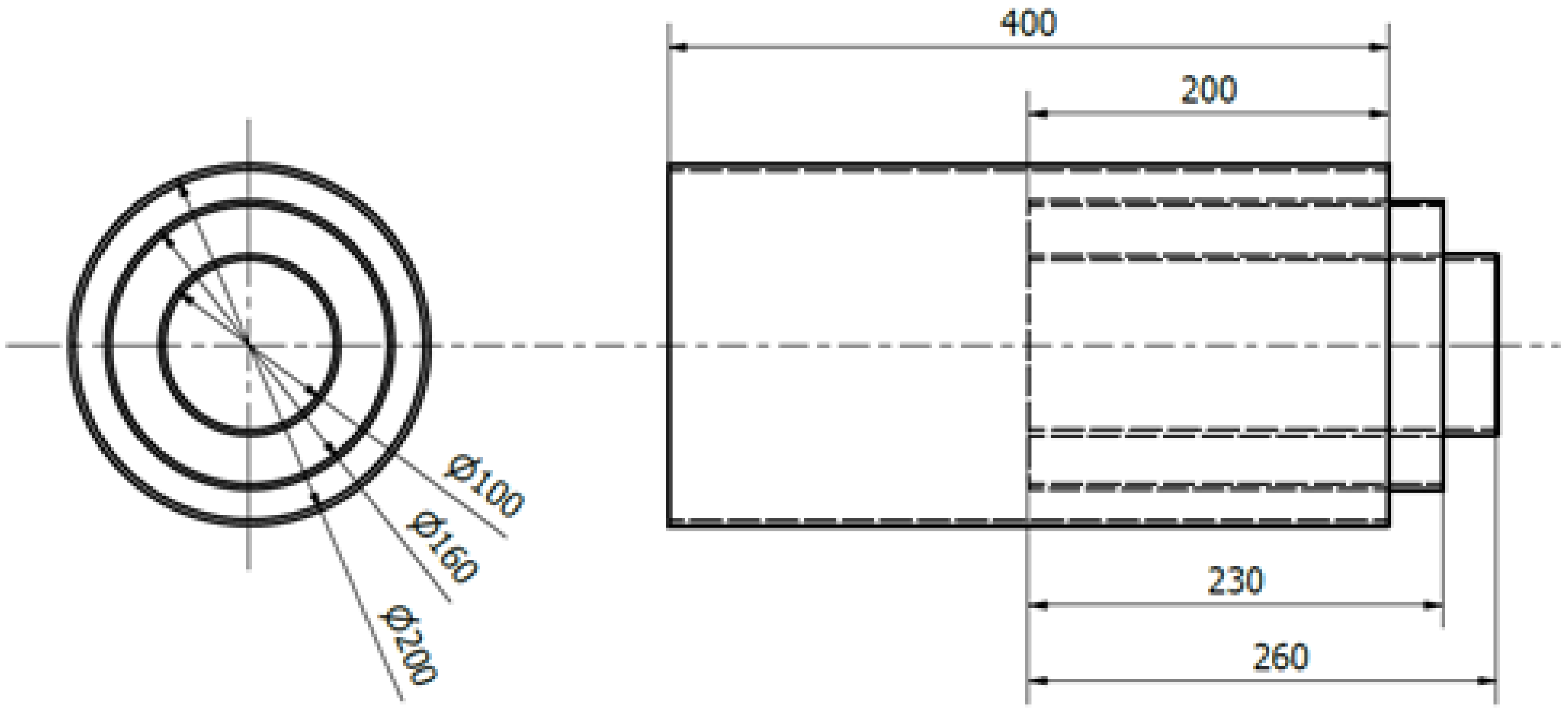


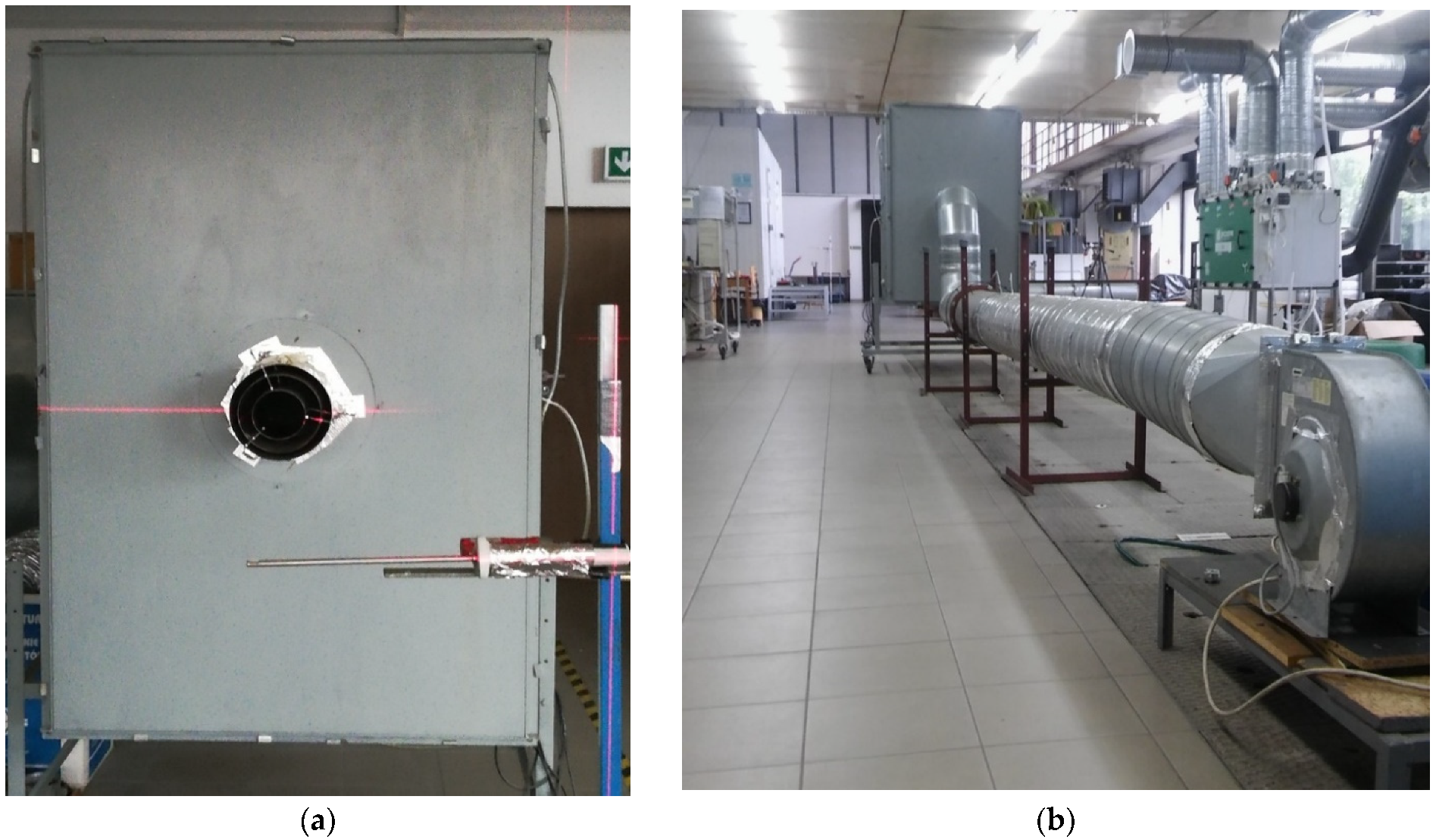
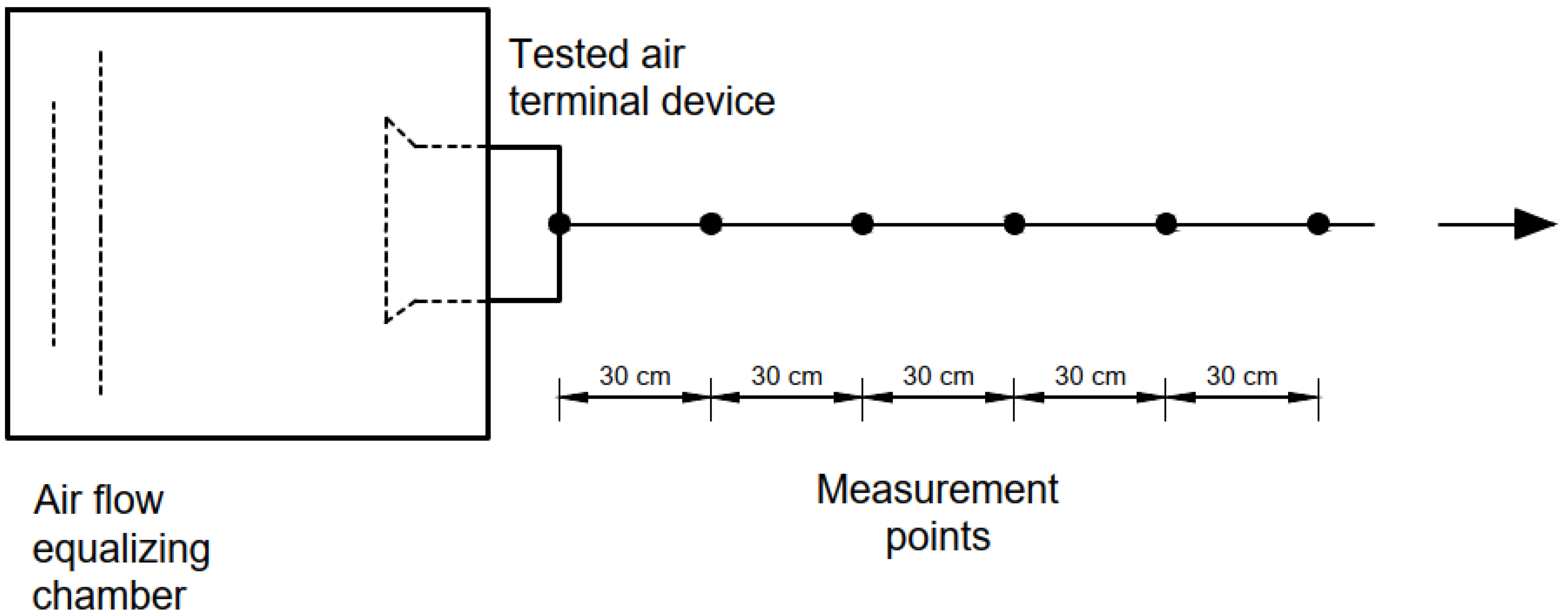
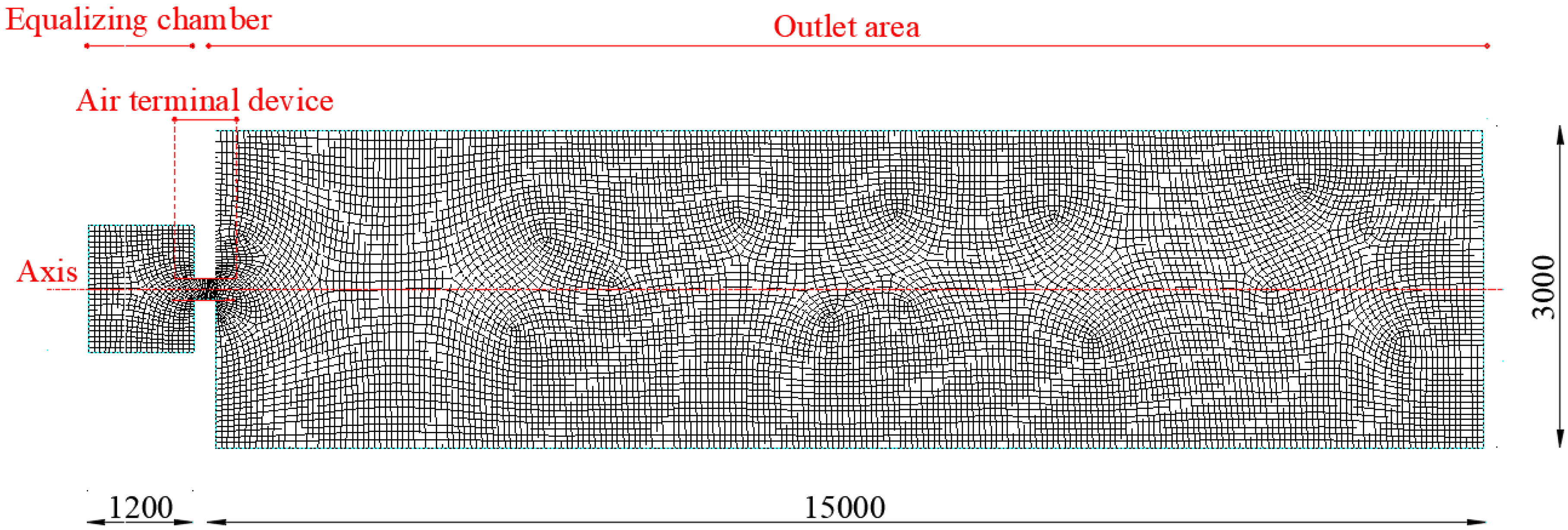
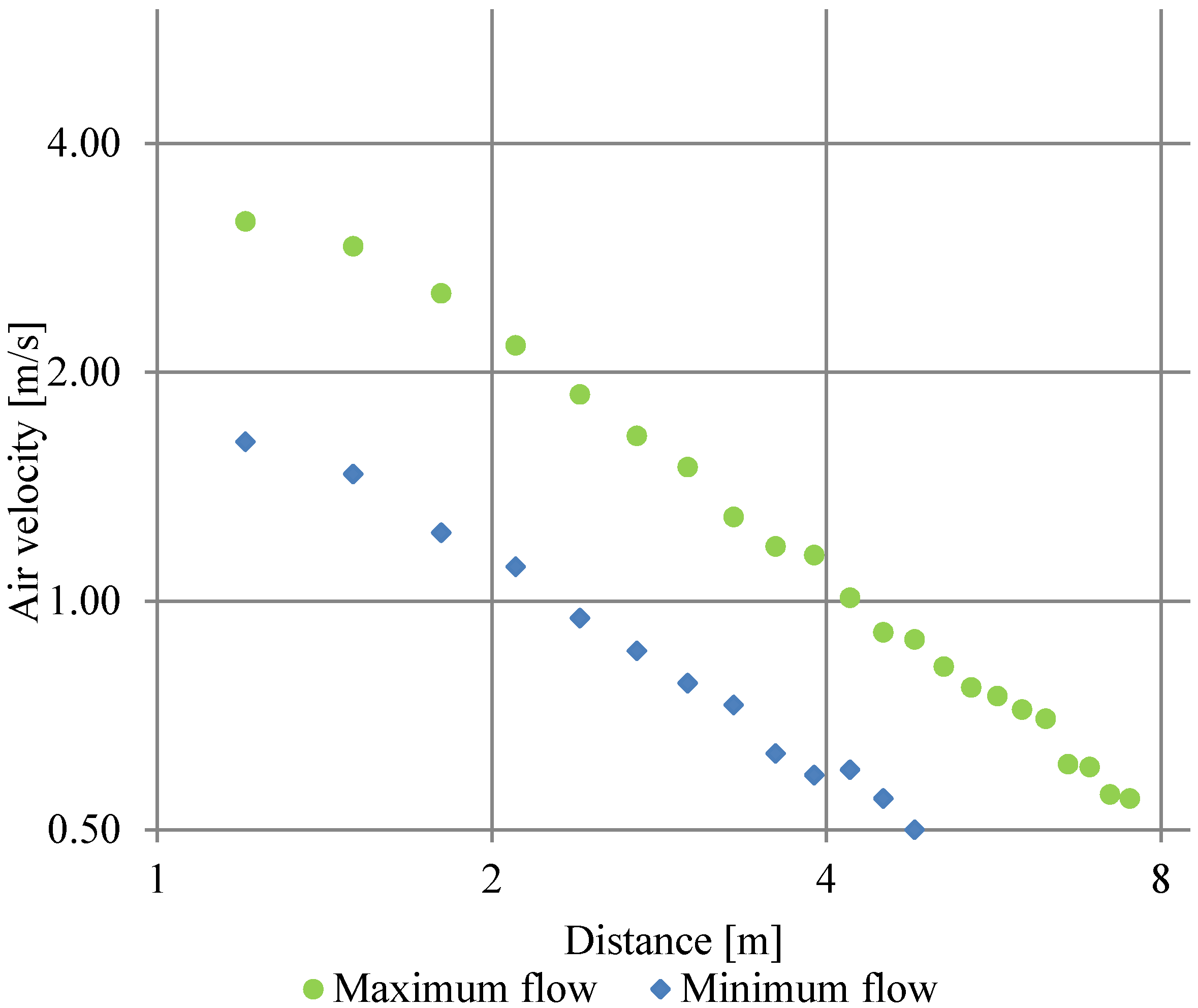




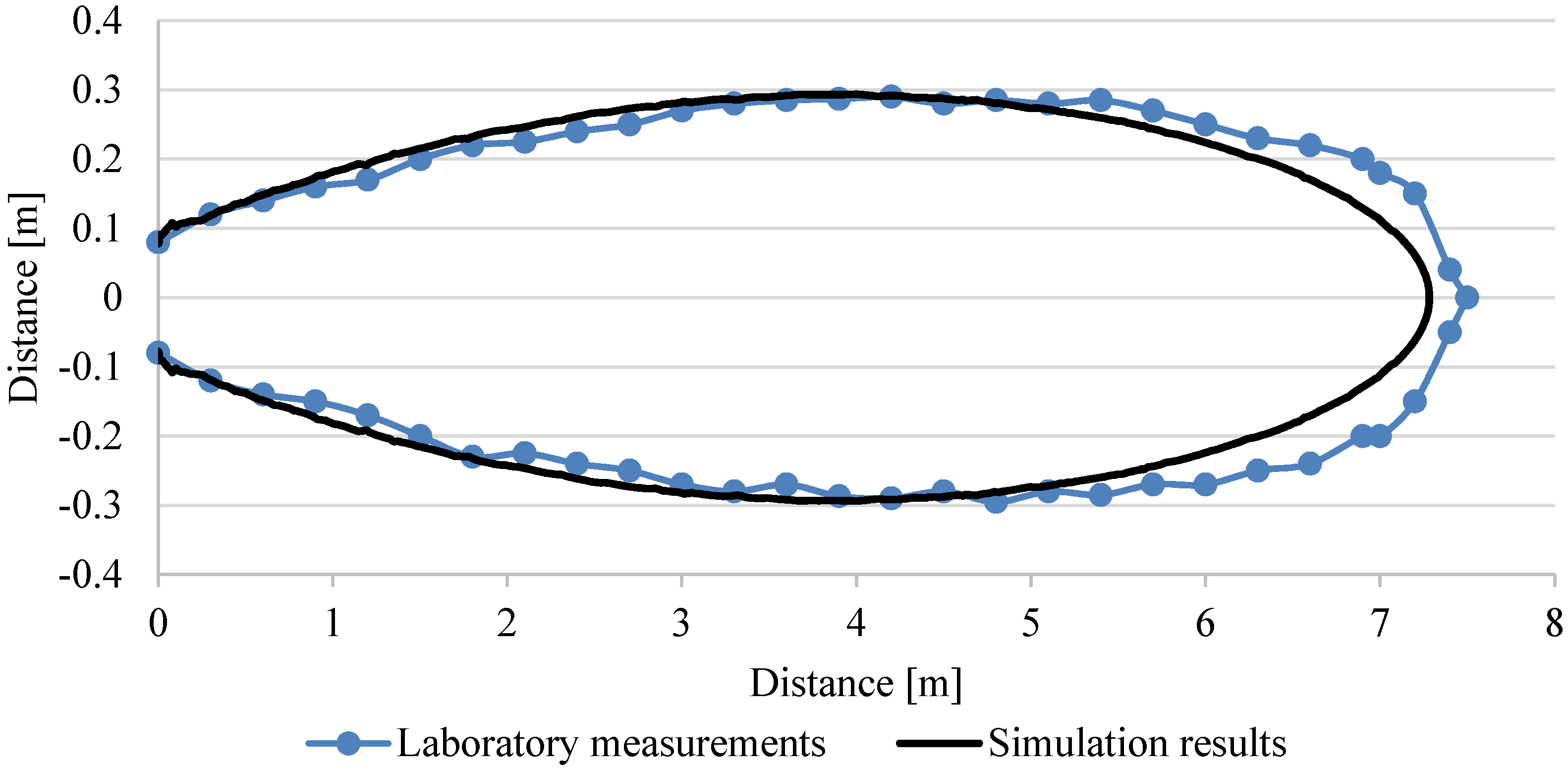
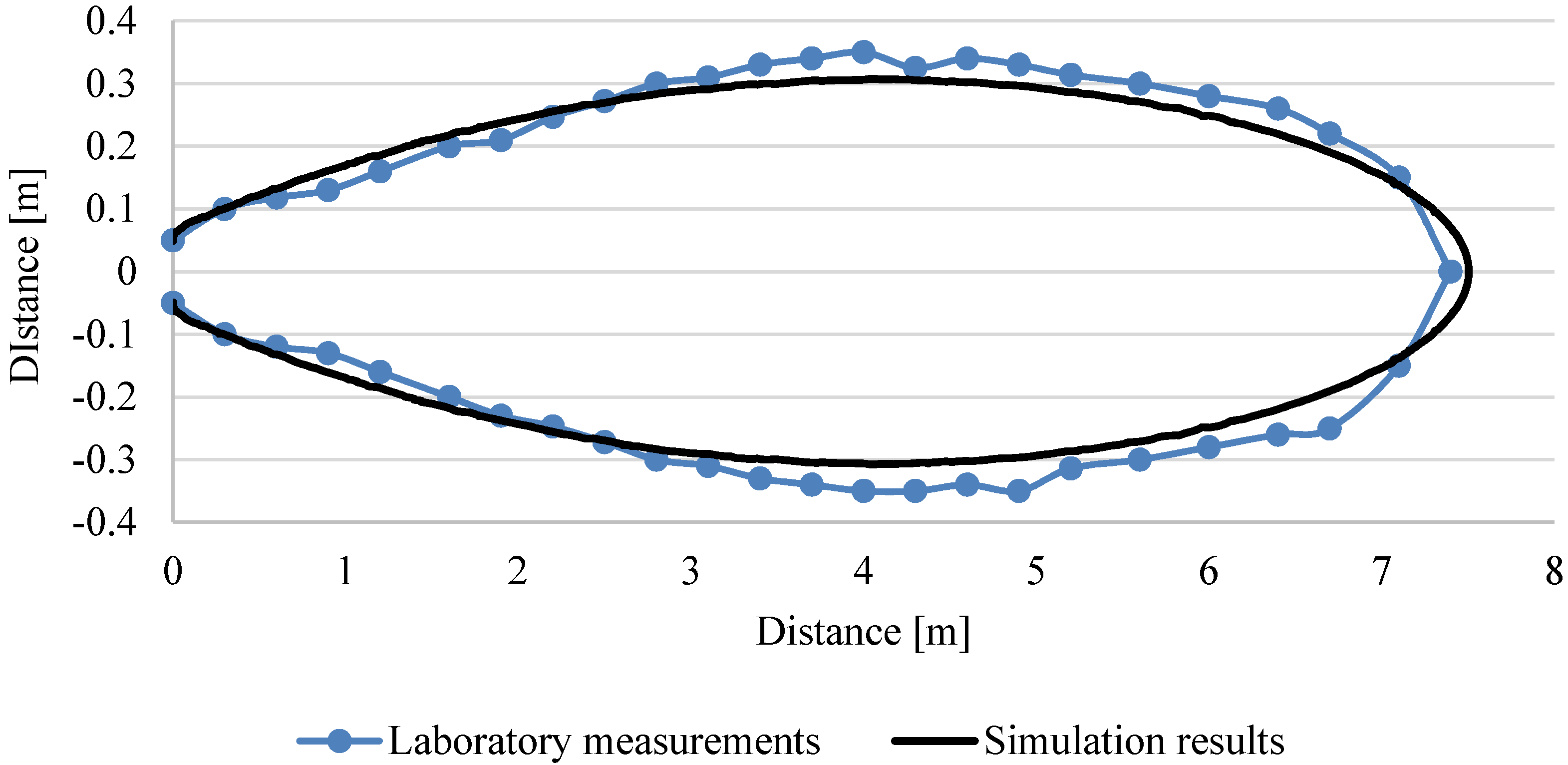

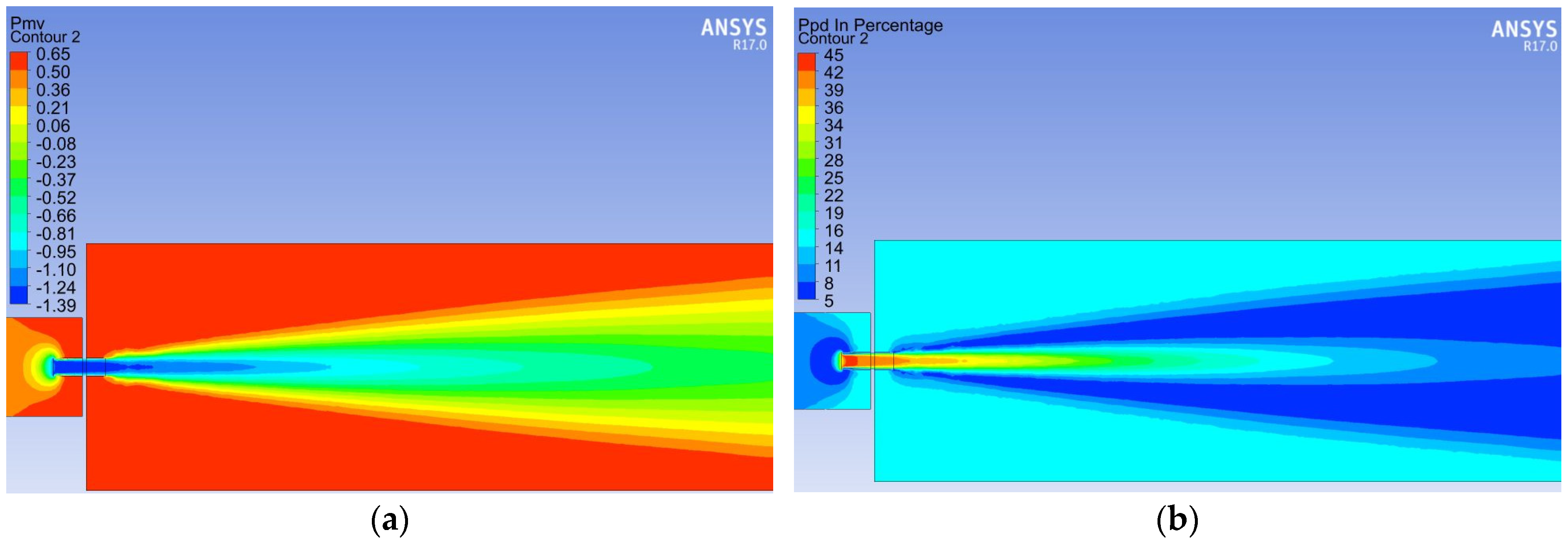
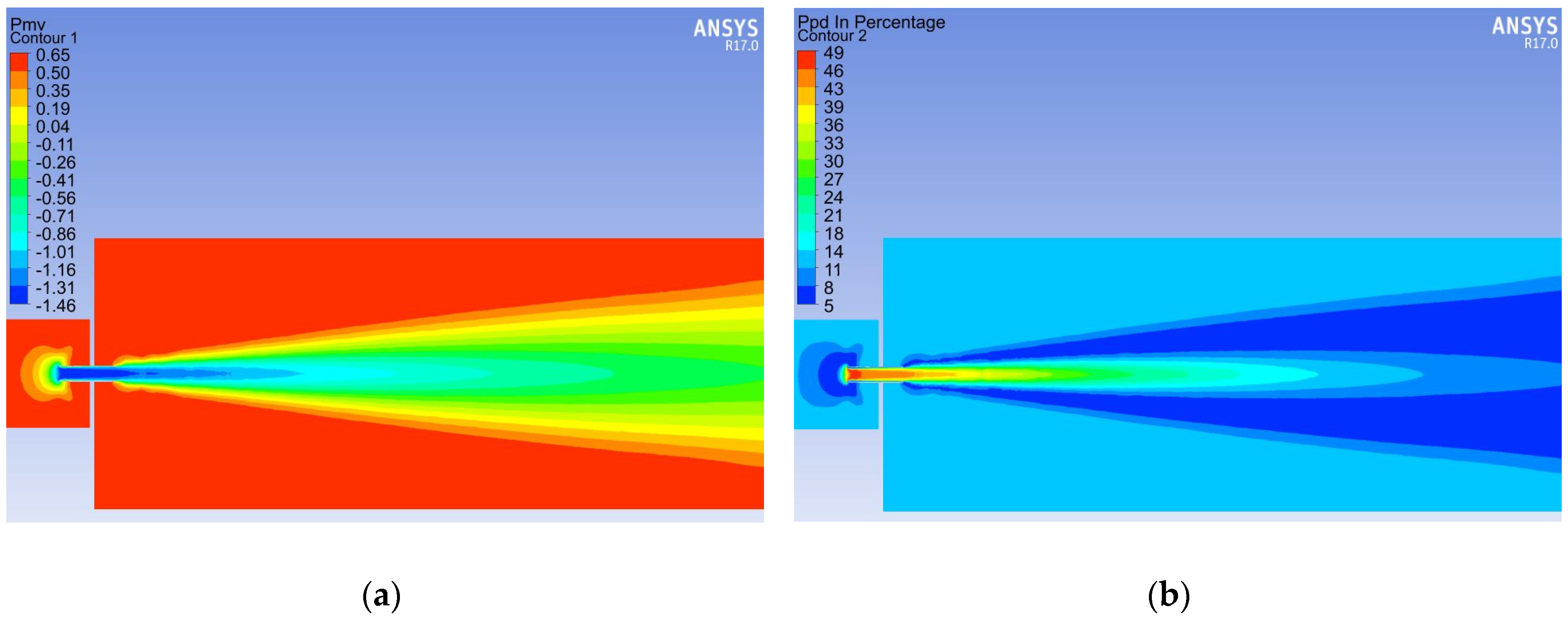
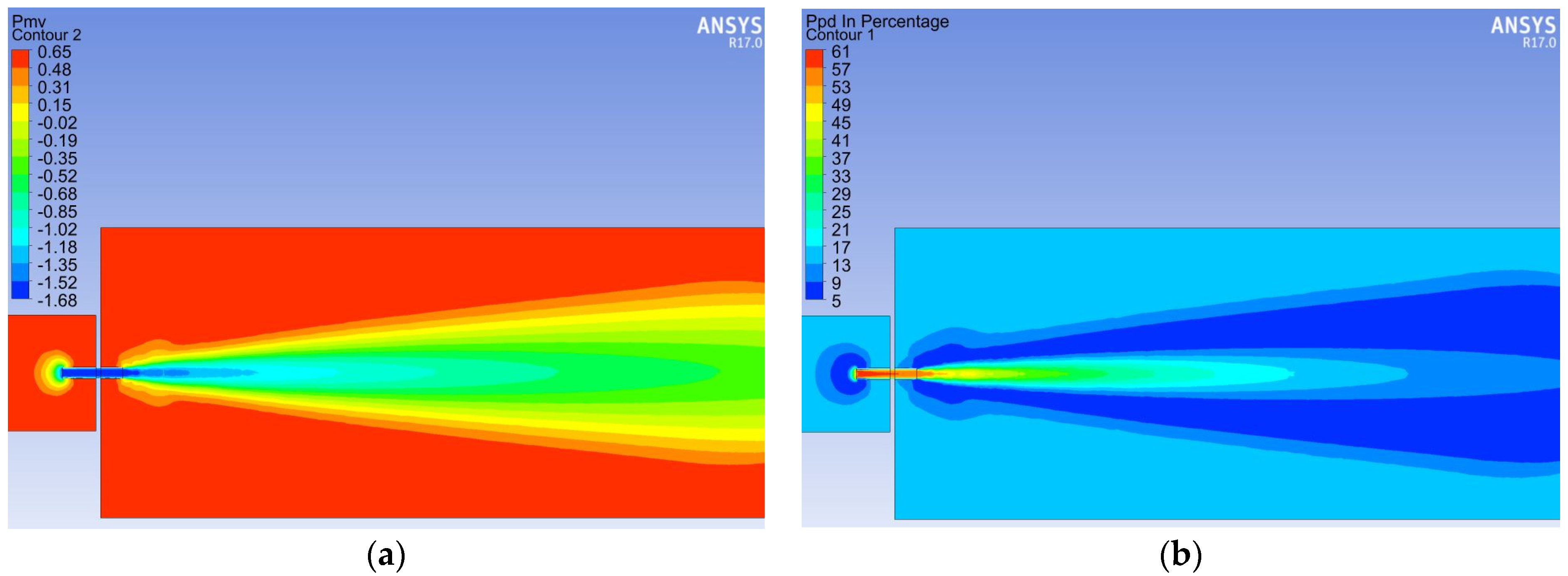
| Equipment Type | Data Range | Accuracy |
|---|---|---|
| Differential pressure sensor | −35,000 to 3500 Pa | ±35 Pa |
| Velocity sensor | 0.08 to 20 m/s | ±0.04 m/s |
| Temperature sensor | −10 to 50 °C | ±0.3 °C |
| Turbulence Model | Velocity (m/s) | Convergence Rate (%) | |
|---|---|---|---|
| Measured | Numerical | ||
| Velocity at 3 m from the ATD | |||
| RNG k–ε | 1.56 | 1.59 | 1.92 |
| Standard k–ω | 1.46 | 6.41 | |
| Standard k–ε | 0.91 | 41.67 | |
| Velocity at 6 m from the ATD | |||
| RNG k–ε | 0.74 | 0.73 | 1.35 |
| Standard k–ω | 0.69 | 13.33 | |
| Standard k–ε | 0.45 | 39.19 | |
| Number of Elements | Max Skewness | Average Air Velocity V (m/s) | Convergence Rate (%) | |
|---|---|---|---|---|
| Experimental | Numerical | |||
| Velocity at 3 m from the ATD | ||||
| 4,233,054 | 0.97928 | 1.56 | 1.62 | 3.85 |
| 8,799,416 | 0.94715 | 1.59 | 1.92 | |
| 11,731,026 | 0.94705 | 1.48 | 5.12 | |
| Velocity at 6 m from the ATD | ||||
| 4,233,054 | 0.97928 | 0.74 | 0.64 | 13.51 |
| 8,799,416 | 0.94715 | 0.73 | 1.35 | |
| 11,731,026 | 0.94705 | 0.79 | 6.75 | |
| Inlet Section | Equalizing Chamber | ATD | Outlet Section | |
|---|---|---|---|---|
| Maximum element size | 20 mm | 10 mm | 5 mm | 20 mm |
| Growth rate | 1.2 | |||
| Cell geometry | Quadrilateral | |||
| Solver | Pressure Based Solver |
|---|---|
| Convergence criterion | 10−6 |
| Spatial discretization | |
| Gradient | Gradient least squares cell-based |
| Pressure | Pressure second-order |
| Momentum | Momentum second-order upwind |
| Turbulent kinetic energy | Second-order upwind |
| Turbulent dissipation rate | Second-order upwind |
| Energy | Second-order upwind |
| Maximum Airflow | Medium Airflow | Minimum Airflow | |
|---|---|---|---|
| Minimum PMV | −1.38 | −1.68 | −1.46 |
| Maximum PMV | 0.64 | 0.64 | 0.64 |
| Minimum PPD | 5.00% | 5.00% | 5.00% |
| Maximum PPD | 44.95% | 60.84% | 48.85% |
© 2020 by the authors. Licensee MDPI, Basel, Switzerland. This article is an open access article distributed under the terms and conditions of the Creative Commons Attribution (CC BY) license (http://creativecommons.org/licenses/by/4.0/).
Share and Cite
Szczepanik-Scislo, N.; Schnotale, J. An Air Terminal Device with a Changing Geometry to Improve Indoor Air Quality for VAV Ventilation Systems. Energies 2020, 13, 4947. https://doi.org/10.3390/en13184947
Szczepanik-Scislo N, Schnotale J. An Air Terminal Device with a Changing Geometry to Improve Indoor Air Quality for VAV Ventilation Systems. Energies. 2020; 13(18):4947. https://doi.org/10.3390/en13184947
Chicago/Turabian StyleSzczepanik-Scislo, Nina, and Jacek Schnotale. 2020. "An Air Terminal Device with a Changing Geometry to Improve Indoor Air Quality for VAV Ventilation Systems" Energies 13, no. 18: 4947. https://doi.org/10.3390/en13184947
APA StyleSzczepanik-Scislo, N., & Schnotale, J. (2020). An Air Terminal Device with a Changing Geometry to Improve Indoor Air Quality for VAV Ventilation Systems. Energies, 13(18), 4947. https://doi.org/10.3390/en13184947






